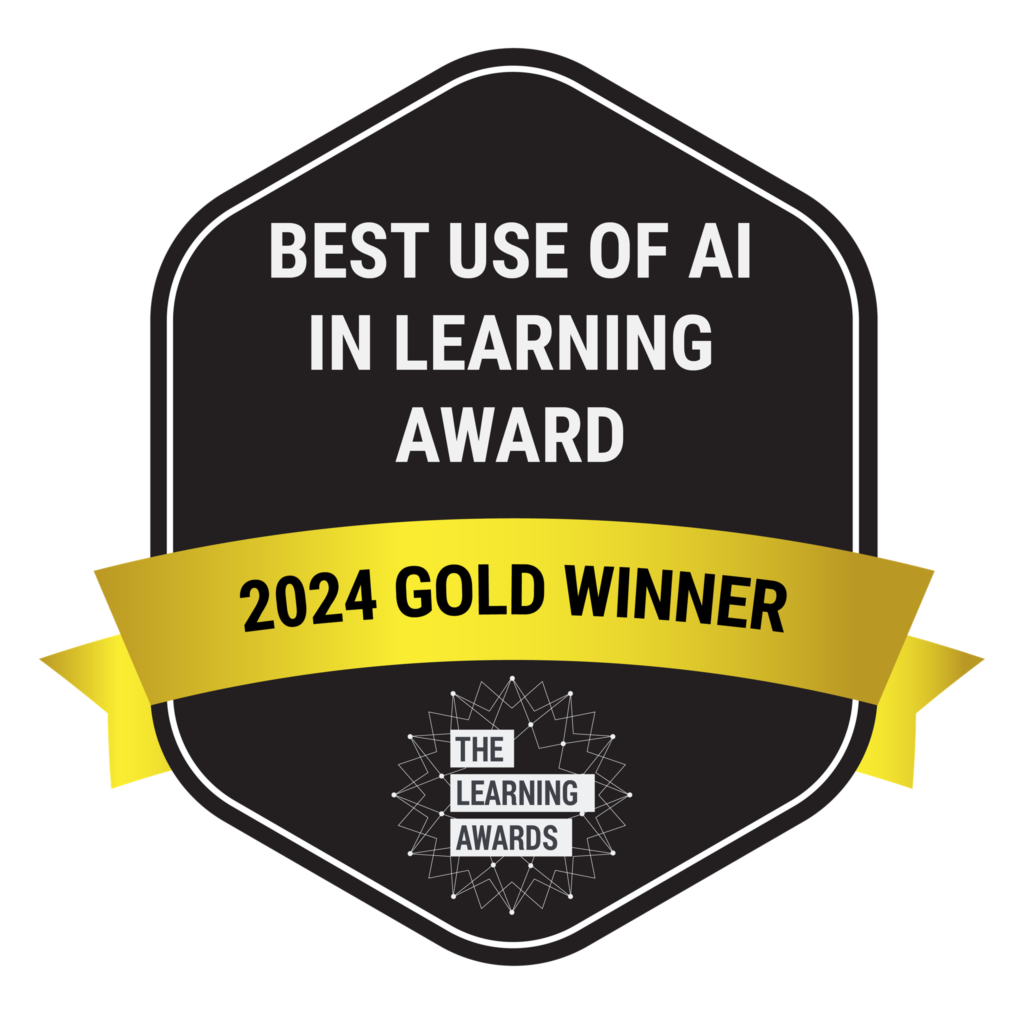Professional learner proficiency has typically been measured on accuracy within a digital learning programme.
Aside from delivering the bare minimum level of insight, current approaches that solely rely on this single metric, fail to consider a key part of corporate learning, confidence.
Just because a learner answers a question correctly does not mean they completely understand the topic; therefore, we need to assess how confident a learner is in their answers.
The importance of confidence
Empirical studies indicate that high question-based confidence levels have been linked to greater knowledge retention (Hassman, Hunt & Dybeck 2003) and putting a self-assessment value on a question improves performance (Koivula, Hassmen & Hunt, 2001). This effect is even stronger when the self-assessment happens after the text answer is given rather than before (Hunt, 2003).
Assessing confidence in multiple-choice testing encourages learners to consider the rejection of incorrect answers in a way that aids understanding of the topic (Bjork et al, 2016). Most people tend to overestimate their abilities and this effect is more pronounced among those with the least skills, this is called the Dunning-Kruger effect.
Knowing how to identify confidence aligned with accuracy is key to understanding whether an individual has truly retained knowledge of a subject.
Understanding the learner
In the workplace, employees must be confident in their decisions as opposed to making calculated guesses.
Organisations must be able to measure both the competence and confidence of their learners to further understand what future training is required. Learners will typically be split into four cohorts:
- High competence, high confidence: These learners don’t need as much training, and won’t need to spend time covering old ground. This cohort of learners should be challenged with new learning objectives.
- High competence, low confidence: These learners still need more confidence and therefore might not be performing at optimum levels due to second-guessing themselves. While they perform well, a lack of confidence may suggest that their high performance lacks consistency. This cohort of learners may require positive reinforcement of their ability and skills.
- Low competence, high confidence: These learners are in the risk category with confidence levels failing to match their accuracy. Here, feedback should be provided to highlight both the strengths and shortcomings of these individuals, indicating areas for improvement. This cohort of learners needs to re-engage with the learning materials and identify where their incorrect assumptions were formed.
- Low competence, low confidence: These are the learners at the beginning of their learning journey. This cohort of learners requires time to consume the course materials to meet the learning objectives.
Although these four categories provide a clean starting point to begin discussions of future learning needs, these can’t be considered mutually exclusive as learners will have differing confidence across a range of topics and subjects.
When understanding confidence on a granular level across subject areas, an organisation can build truly personalised coaching strategies which are shaped and delivered according to each learner’s personalised needs and abilities.
So, how can companies assess the confidence of learners, as well as their competence?
Enter adaptive learning – an innovative approach to corporate training and development. Not only does this model present questions for employees to consider and answer throughout the learning journey, but it will also continually adapt a training programme based on how well an employee understands the content involved. If a learner can evidence a required level of mastery in a subject, the course will adapt in real-time to challenge them in a different area.
Obrizum uses its multi-patented meta-cognitive confidence slider on each response to identify how confident a learner is on every element of the multiple-choice question; these responses impact which learning content is served next.
Adaptive learning platforms such as OBRIZUM establish what the learner understands and chooses the learning materials as per the individual’s needs, all in real-time. All of this is achieved using AI, saving course organisers significant time and resources in the time it takes to build and deliver personalised learning courses.
Accurately assessing a learner’s understanding of course material is key here. This is achieved through monitoring, measuring and interpreting a variety of metrics – from the time and attention spent on each question to the perceived accuracy and confidence a learner has in answering them.
These additional assessment criteria help to ensure that a learner is provided with a more appropriate training programme based on their competency and confidence level. In addition, it ensures that training programmes can’t be gamed or guessed – an important capability in industries where key activities carry major risks.
By replacing generic mouse-clicking training exercises with courses that ensure genuine knowledge transfer and retention, adaptive learning platforms can go a long way in helping individuals to become both competent and confident when making key decisions, benefitting both employees and employers alike.
OBRIZUM is the AI learning technology & data analytics company for enterprise businesses.
We leverage automation, adaptability and analytics to deliver adaptive learning experiences at scale.
Find out how OBRIZUM can help unlock the potential of your business by speaking to our team.




